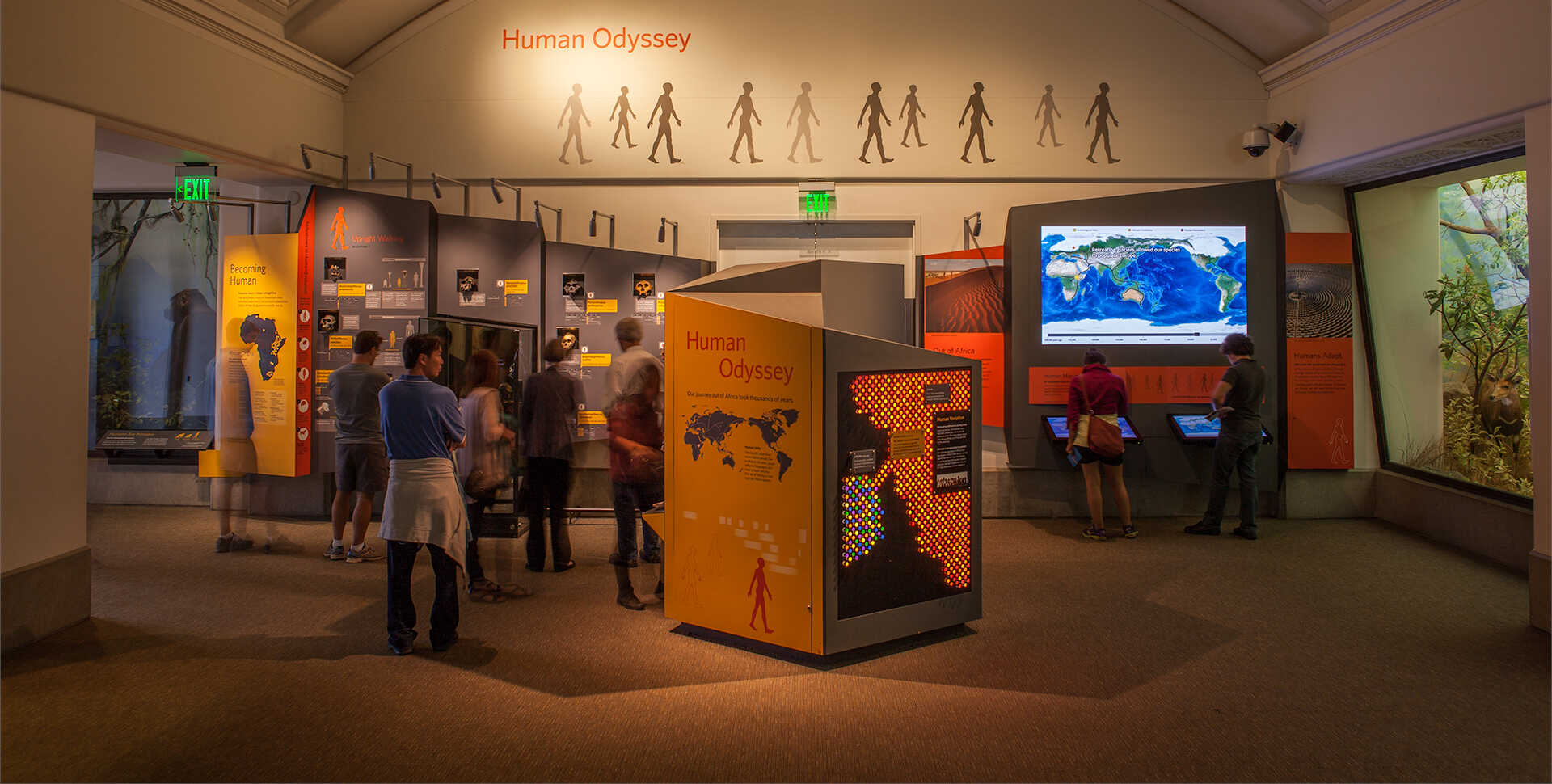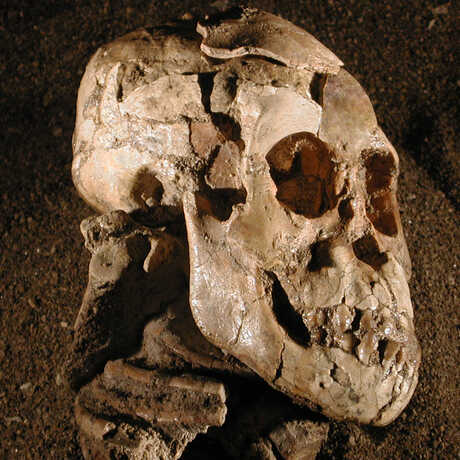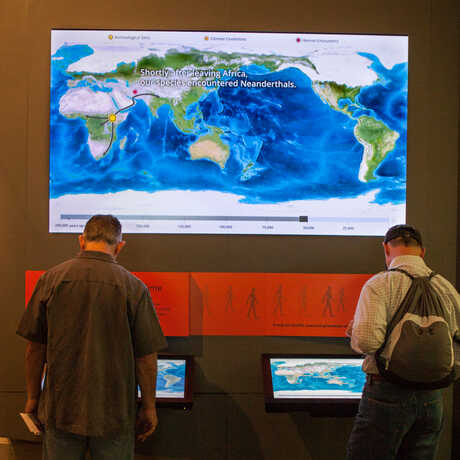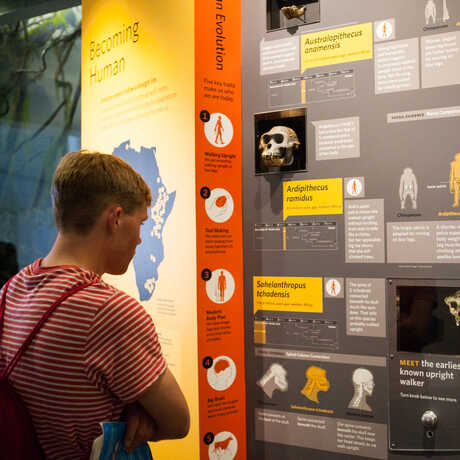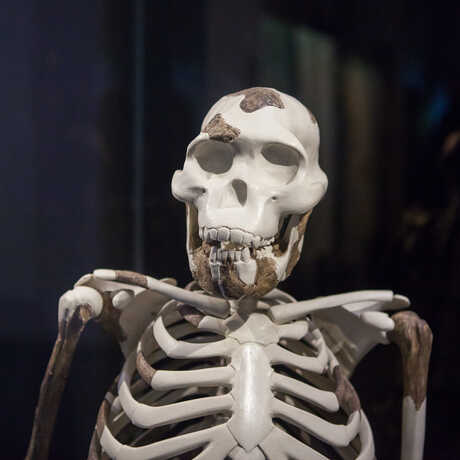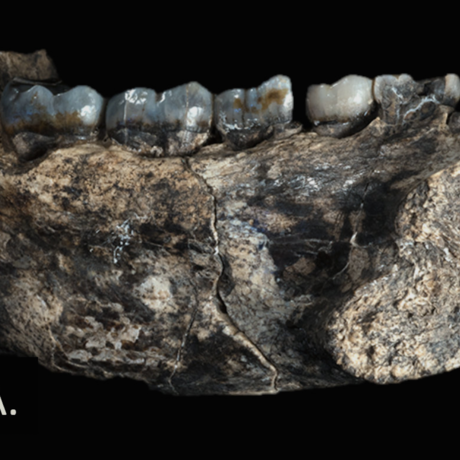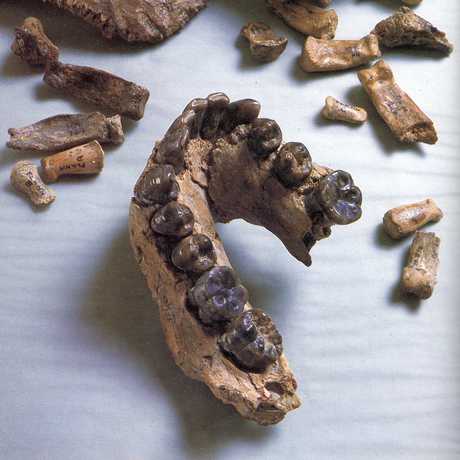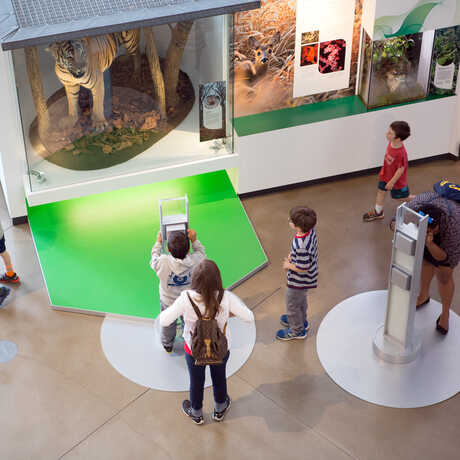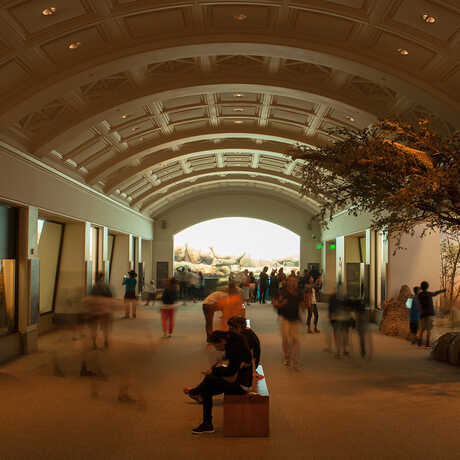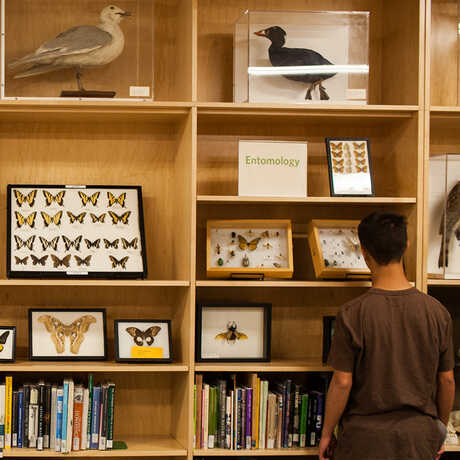Visit an aquarium, planetarium, rainforest, and natural history museum—all under one living roof.
In 2006, the Academy's Dr. Zeray Alemseged reported finding a 3.3 million-year-old fossil in Ethiopia—the skeleton of a 3-year-old Australopithecus afarensis child. Nicknamed “Selam,” the discovery has provided new insights into the anatomical, behavioral, and developmental evolution of early human ancestors.
